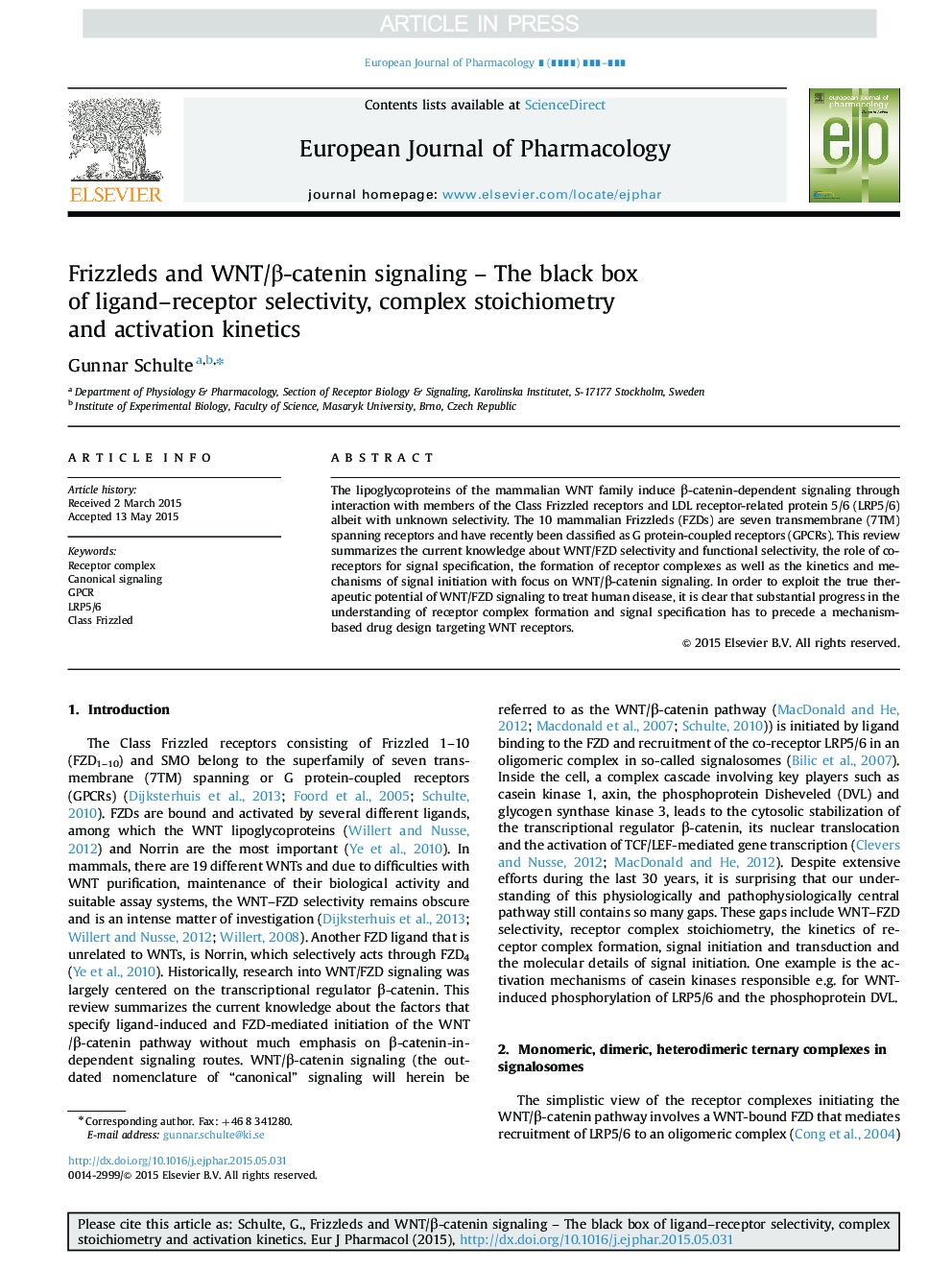| Article ID | Journal | Published Year | Pages | File Type |
|---|---|---|---|---|
| 5827124 | European Journal of Pharmacology | 2015 | 5 Pages |
Abstract
The lipoglycoproteins of the mammalian WNT family induce β-catenin-dependent signaling through interaction with members of the Class Frizzled receptors and LDL receptor-related protein 5/6 (LRP5/6) albeit with unknown selectivity. The 10 mammalian Frizzleds (FZDs) are seven transmembrane (7TM) spanning receptors and have recently been classified as G protein-coupled receptors (GPCRs). This review summarizes the current knowledge about WNT/FZD selectivity and functional selectivity, the role of co-receptors for signal specification, the formation of receptor complexes as well as the kinetics and mechanisms of signal initiation with focus on WNT/β-catenin signaling. In order to exploit the true therapeutic potential of WNT/FZD signaling to treat human disease, it is clear that substantial progress in the understanding of receptor complex formation and signal specification has to precede a mechanism-based drug design targeting WNT receptors.
Keywords
Related Topics
Life Sciences
Neuroscience
Cellular and Molecular Neuroscience
Authors
Gunnar Schulte,
